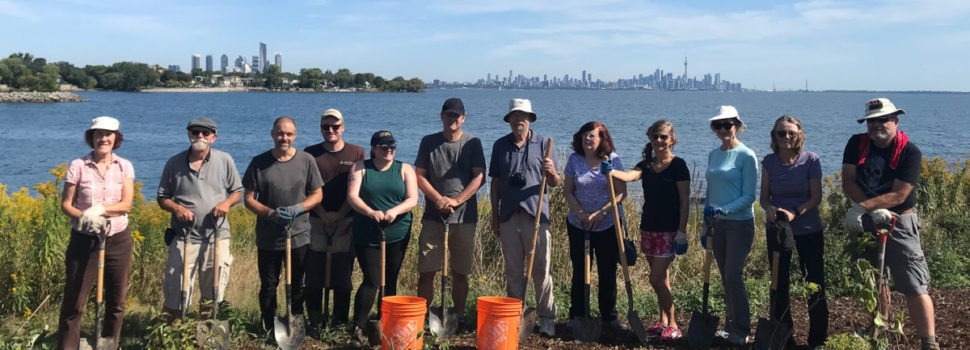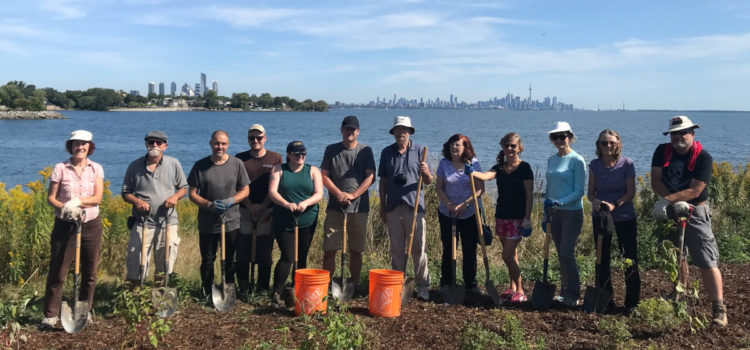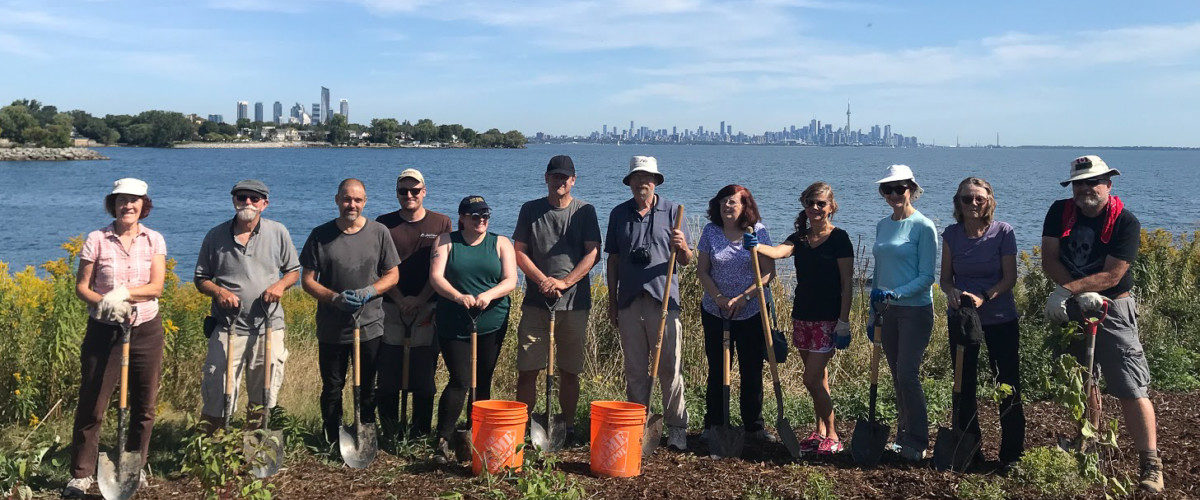

Burdock vs. Birds: Deadly Enemies at Colonel Sam Smith Park
EnvironmentEtobicokeHumber Sep 19, 2019 Mariana Belham

Burdock vs. Birds: Deadly Enemies at Colonel Sam Smith Park
Behind the beautiful scenery of Sam Smith Park lies a threat known as burdock.
On Thursday, September 19, Friends of Sam Smith Park, the Toronto and Region Conservation Authority (TRCA) and volunteers planted many native shrubs and trees at Whimbrel Point in an effort to overcome the threat.
Barbara Keaveney, a member of the Friends of Sam Smith Park, explained why they were doing the planting. “We are planting small shrubs where a lot of burdocks was taken out,” she said.
“The burdock was taken out because it was becoming a problem with the birds,” Keaveney added.
David Creelman, volunteer and founder of Friends of Humber Bay, came out to help out. “Burdock is an invasive plant, originally brought over from Europe and now spread through our parks,” he said.
“The main problem is that, when it’s an adult plant, it has these nasty burs. It’s the burs that velcro was modelled on. The small birds, while migrating, they would get stuck in the burs and they will die right there,” Creelman said. He has found three himself, and another volunteer had found four dead birds.
According to Keaveney, it initially started with a visit of the TRCA during clean-up in April. The TRCA assistant Jacob Mokrzynsky than asked for areas where there were a lot of burdocks. Keaveney took him to Whimbrel Point. Then, not long after, Jacob brought in the equipment and removed the invasive plant.
“Using special tools, we removed over 100 burdock plants from the area,” he said. “After we had removed the plants we laid down some landscape fabric […] help cook the burdock seedbed that’s found underneath in the soil.”
After two months, a new biodegradable hemp fibre mulch was put down. “Then, the wave planted the area here with 47 native shrubs and three native tree species, in the hopes that they will begin to use their roots system to out-compete the burdock and out-shade the burdock,” Mokrzynsky said.
The TRCA’s efforts don’t stop there. They also did what they called “monitoring.” That is the process of taking measures like height and the thickness of the stem. After that, all the plants were tagged.
Plant with its identification number. (Photo by Mariana Belham)
“We’ve monitored 10% out of the species that have been planted, and we will be returning for the next 5 to 7 years to this site to complete follow-up monitoring as well as completing more burdock removals,” Mokrzynsky said. “And hopefully plant some more native shrubs.”
Jacob Mokrzynsky teaches how to measure a plan to volunteer, with another TRCA Trish. (Photo by Mariana Belham)
Another aspect that Creelman pointed out is the importance of community participation to get this type of job done.
“Well, unfortunately, the city does not have money to deal with invasive plant issues,” he said.
“It’s also a fabulous way to get in touch with nature, learn what the issues are. It’s a huge system and a lot of our parks are almost deserts, some of them have 2 or 3 native bee types, where there should be dozens,” Creelman said. “And that’s going to take a lot of remediation with partnerships with citizens, Toronto and Region Conservation Authority and the City of Toronto to try and make that better, make our parks healthier. We need to protect them.”
If you’d like to be part of Friends of Sam Smith Park or get in touch, Barbara Keaveney can be reached at barbara.keaveney@sympatico.ca.
If you’ve seen burdock around your area, and you want to do planting, contact the Toronto and Region Conservation Authority at (416) 661-6600.
